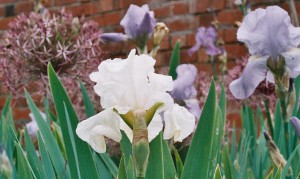Buddhism began in India a few thousand years ago. You can easily look up the life of the Buddha, his basic teachings and the history of Buddhism, so I’m not going to attempt to recount that here, except to note that ,over time, as Buddhism spread to different places and different cultures, it adapted to those different situations. This led to a wide variety of different emphases. In the modern world, where many people have moved from one country or culture to live in another, Buddhists have moved around, just like other people, and have brought their brand of Buddhism with them. This means that, particularly in western countries, Buddhism is not only a relatively new arrival, but that it has arrived in many different varieties. Some of this broad spectrum has impacted on my own beginnings with Buddhism.

Years ago, when I was a student I read some books about Buddhism, most notably John Blofeld’s autobiographical The Wheel of Life, much of which I did not understand. Looking back, this reading was a bit like reading holiday brochures, flicking through, thinking ‘that would be a nice place to go, and so would that, or what about …’, but not actually booking a holiday at all.
Then in early 2006 a course at Charney Manor ‘Exploring Stillness (Quakers and Buddhists)’ rekindled my interest. A few days later in the bookshop at Friends House I bought several books including Teach Yourself Buddhism and Living Buddha, Living Christ. On the tube on my way home, I was reading one of these and noticed that the passenger standing beside me was reading a Buddhist magazine. I was intrigued enough to note the web address from her magazine and to look it up when I got home. It led me to SGI UK and after a quick read I decided that form of Buddhism was not for me, and went back to my choice of books.
The following autumn this email arrived in my inbox:
Dear Friends,
Here is an invitation from our local group of lay Buddhists, which is not to be missed! I hope some of you can attend.
With all best wishes,
J
Hi J.
I thought you (and WIFA) might be interested to learn that we local Buddhists are coming out of the closet and holding our monthly meetings in public from this month on. Our venue is the Newton Price Centre, Grosvenor Road (just off the ring road, opposite John Lewis in the Harlequin Centre), and we’re holding an introductory meeting there on Monday 18 September, 7.30-9pm. You and/or any member of WIFA will be more than welcome if you’d like to discover more about exactly what it is we do. If that date is no good, we’ll also be there on 16 Oct, 20 Nov and 18 Dec.
Hope to see you there one evening – or indeed, somewhere else!
Best wishes,
E
When I read that – I just knew that I was going to go to that meeting. I didn’t know how I would get there, why I was going or what would happen, but I had a very clear idea that I was going, which did not lessen as the weeks passed. When I went to that meeting, it turned out that this was our local SGI UK Buddhist group.

One thing that happened was that I was challenged, in the discussion, to speak from my own experience – ‘what can you say?’ (Quaker readers will realise what this meant to me). I still wasn’t clear for a long time why it was important that I be there, but it led to some good friends; to a lot a challenges to explain myself; to an increased confidence in speaking of God (not easy in a group of Buddhists) and to a regular informal interfaith discussion group, which seemed to fill a niche for some time.
So, having at one time rejected this brand of Buddhism out of hand, I came to value it. At first the chanting, prolonged and often loud, was very strange to a Quaker used to quieter ways, but I came to find that it was a way into stillness. The chanting calms almost all chance of following any those thoughts in my monkey mind. Done in company I am continually brought back to ‘nam myoho renge kyo’. The quality of sharing and listening in the discussion groups is impressive and I have learnt a great deal from other people sharing their experiences.

A weekend course at Woodbrooke in December 2009 brought me into contact with the Community of Interbeing, practicing Zen Buddhism in the tradition of Thich Nhat Hanh. The emphasis on silent meditation was more accessible for me, as one deeply steeped in Quaker silence, and the walking meditation, in particular, was both a delight and a practical help with my MS symptoms. The tradition also includes opportunities for sharing experiences and for deep listening, as well as practices to help us deal with difficulties. For the present, this is the Buddhist tradition that I feel I want to join and explore further, while remaining firmly within my Quaker context1. But I am glad to continue occasional contact with my local SGI group, and very happy to sit and chant with them when the opportunity arises.






